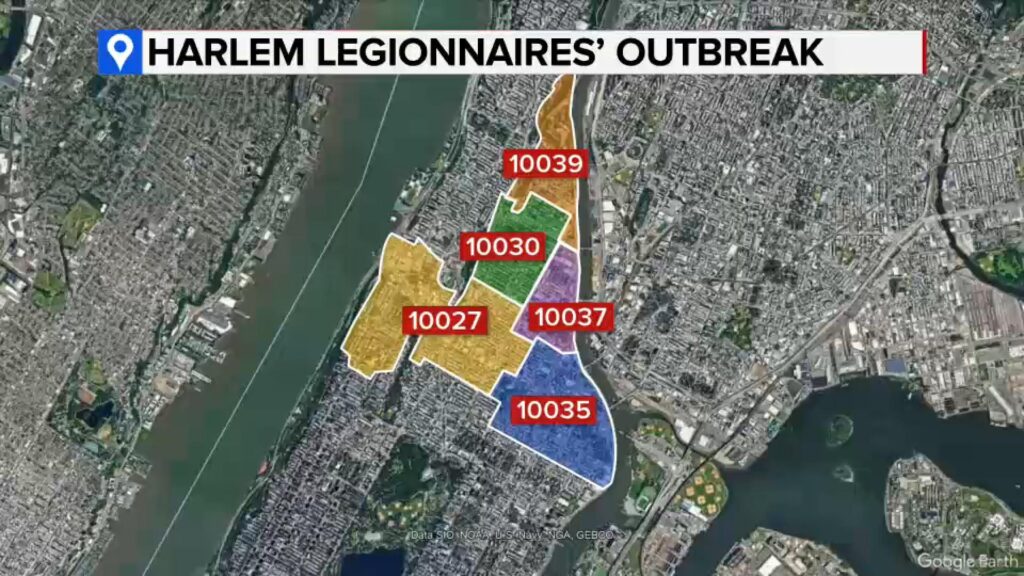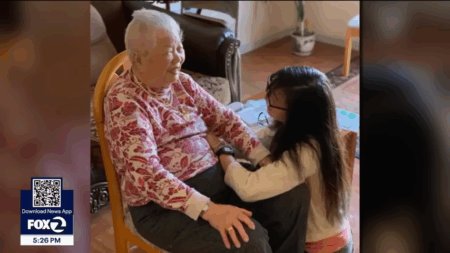Escalating Legionnaires’ Disease Outbreak in Harlem Exceeds 80 Confirmed Cases
The Legionnaires’ disease outbreak in Harlem has intensified, with health authorities confirming that more than 80 residents have contracted the illness. This surge highlights a growing public health challenge as officials work diligently to trace the contamination source, focusing primarily on local water infrastructures such as cooling towers and municipal water supplies. Community members are strongly advised to stay alert and seek medical evaluation immediately if they experience symptoms like high fever, persistent cough, or muscle pain.
In response, city agencies have ramped up comprehensive inspection and sanitation efforts throughout the affected areas. The outbreak spans a wide demographic, affecting individuals from various age groups, which underscores the widespread nature of the issue. Key statistics from the latest health department report include:
| Statistic | Information |
|---|---|
| Confirmed Cases | 81+ |
| Hospital Admissions | 24 |
| Age Range of Patients | 32 to 78 years |
| Deaths Reported | 3 |
| Primary Investigation Targets | Cooling towers, public water systems |
- Healthcare providers are coordinating closely to ensure swift diagnosis and treatment.
- Community education initiatives have been launched to inform residents about prevention strategies.
- Ongoing updates will be shared as the situation evolves.
Comprehensive Investigation and Emergency Response to Legionnaires’ Outbreak
Public health officials have mobilized extensive investigations to identify the root cause of the Legionnaires’ outbreak in Harlem. Teams are conducting detailed assessments of water distribution networks, cooling towers, and other communal facilities suspected of harboring Legionella bacteria. Environmental sampling is being expedited, with laboratory analyses underway to confirm contamination sources. Simultaneously, maintenance logs and water treatment procedures at high-risk locations are under review to prevent further bacterial proliferation.
To mitigate the outbreak’s impact, emergency protocols have been activated, including:
- Rigorous sanitation of water systems and cooling infrastructure.
- Public health advisories cautioning residents against using potentially contaminated water.
- Enhanced surveillance in medical facilities to detect new cases promptly.
- Deployment of rapid response units to support vulnerable populations.
| Action | Description | Current Status |
|---|---|---|
| Water Sampling | Testing at 25 strategic locations throughout Harlem | In Progress |
| Community Alerts | Distribution of multilingual flyers and digital notifications | Active |
| Medical Monitoring | Hospitals providing daily updates on new cases | Ongoing |
| Sanitization Procedures | Chlorination and heat treatments being applied | Underway |
Understanding Legionnaires’ Disease: Symptoms and Vulnerable Populations in Harlem
Legionnaires’ disease often presents symptoms similar to severe pneumonia, complicating early diagnosis. Harlem residents should be alert for signs such as high fever, chills, and a persistent cough that may produce mucus or blood. Additional symptoms include muscle soreness, headaches, shortness of breath, and occasionally gastrointestinal disturbances like nausea, vomiting, or diarrhea. Given the rapid progression of symptoms in some cases, anyone experiencing respiratory difficulties or worsening flu-like conditions should seek medical care without delay.
Certain groups face elevated risks of severe illness from Legionella infection. Older adults, smokers, individuals with compromised immune systems, and those suffering from chronic respiratory diseases are particularly susceptible to complications such as respiratory failure and bloodstream infections. The table below outlines these high-risk categories alongside common symptoms to monitor:
| High-Risk Groups | Typical Symptoms |
|---|---|
| Adults aged 50 and above | High fever, persistent cough, breathing difficulty |
| Current or former smokers | Chronic cough, muscle pain, headaches |
| Immunosuppressed individuals | Rapid symptom escalation, digestive upset |
| Patients with chronic lung conditions | Severe pneumonia, respiratory distress |
Residents are encouraged to report any suspected exposure or symptoms promptly. Public health teams continue to focus on contaminated water systems, a known breeding ground for Legionella bacteria. Preventative strategies, including diligent upkeep of HVAC and plumbing systems, remain essential to curbing the outbreak’s spread.
Recommended Prevention and Treatment Strategies to Limit Legionnaires’ Spread
Health authorities stress the urgency of proactive measures to prevent new infections. Building owners and residents should adhere to strict water system maintenance routines, emphasizing regular disinfection and temperature regulation to inhibit Legionella growth. Public health advisories also recommend avoiding stagnant water and ensuring that cooling towers and plumbing infrastructures undergo frequent cleaning and testing. Medical professionals are advised to maintain a high index of suspicion for Legionnaires’ symptoms to facilitate early diagnosis and treatment, thereby minimizing severe outcomes.
Treatment primarily involves the timely use of targeted antibiotics, customized according to the patient’s condition and risk profile. Hospitalization is common for those with moderate to severe illness, especially individuals with underlying health issues or weakened immunity. The following table summarizes treatment protocols based on illness severity:
| Illness Severity | Treatment Method | Care Environment |
|---|---|---|
| Mild | Oral antibiotics such as azithromycin | Outpatient care |
| Moderate | Intravenous antibiotics with supportive therapies | Hospital admission |
| Severe | IV antibiotics plus respiratory support | Intensive care unit (ICU) |
Final Thoughts on the Harlem Legionnaires’ Outbreak
As the Legionnaires’ disease outbreak in Harlem continues to grow, now affecting over 80 individuals, public health officials urge the community to remain informed and cautious. Investigations are ongoing to identify and eliminate the contamination source, while containment efforts persist. Residents and visitors alike should prioritize early recognition of symptoms and seek prompt medical care. Authorities will continue to provide updates as new information emerges, reinforcing the importance of community cooperation in overcoming this public health challenge.













